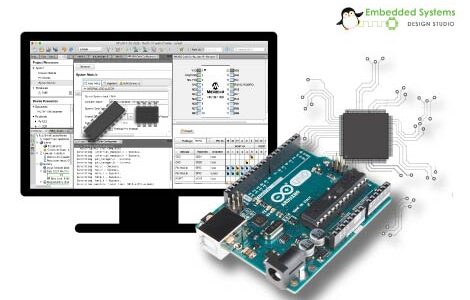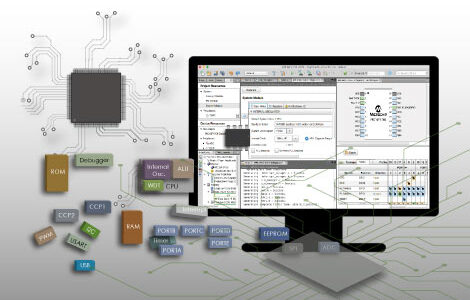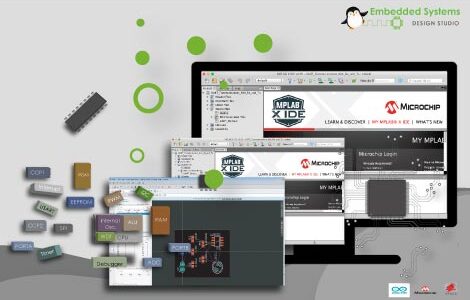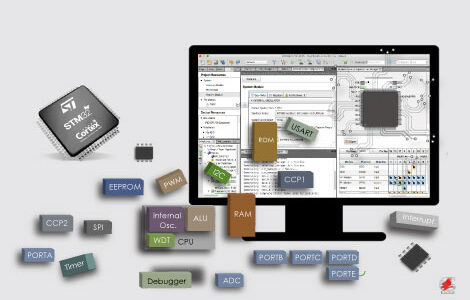Note: This course is not yet open for purchase. However, the ‘Curriculum‘ tab above provides access to the course lessons.
This course is designed to provide an in-depth understanding of AVR microcontrollers, covering architecture, programming, and practical applications. The focus is on Atmel AVR microcontrollers, widely used for industrial, commercial, and DIY projects, with hands-on experience for building real-world embedded systems.
Course Title:
Mastering AVR Microcontrollers: From Basics to Advanced Embedded Applications
Course Overview:
The course offers a comprehensive guide to AVR microcontroller programming, starting with foundational concepts and progressing to advanced interfacing and system design. It combines theoretical explanations with practical projects, ensuring a complete learning experience for embedded systems enthusiasts.
Target Audience:
- Beginners with a basic understanding of electronics and programming.
- Embedded systems enthusiasts who want to master AVR microcontrollers.
- Engineers and students aiming to develop practical skills in AVR-based system design.
Prerequisites:
- Basic knowledge of electronics and C programming.
- Familiarity with digital systems and logic is recommended.
Course Duration:
10 weeks (3 hours/week)
Self-paced option available with a total of 30 hours of content.
Module 1: Introduction to AVR Microcontrollers
- Overview of AVR microcontroller families.
- Features and applications of AVR microcontrollers.
- Understanding the architecture of AVR (ATmega328P as a reference).
- Overview of memory organization and I/O ports.
- Setting up the development environment: Atmel Studio, AVR GCC, and Proteus.
Module 2: Getting Started with AVR Programming
- Introduction to the AVR toolchain and programming workflow.
- Writing and uploading your first program: Blinking an LED.
- Understanding fuse bits and clock configurations.
- GPIO Programming: Configuring input/output pins, LED, and switch interfacing.
Module 3: AVR Timers and Interrupts
- Overview of AVR timers: Modes and configurations.
- Generating delays with timers.
- PWM generation for motor control and LED dimming.
- Configuring and handling interrupts: External and timer interrupts.
Module 4: Communication Protocols in AVR
- USART: Setting up serial communication with PCs and peripherals.
- I2C (TWI): Master-slave communication and interfacing EEPROM/RTC.
- SPI: High-speed communication with external devices like ADCs and sensors.
- UART Debugging: Sending and receiving debug messages via serial terminals.
Module 5: Interfacing Peripherals with AVR
- LCD Display: Programming 16×2 alphanumeric displays.
- Seven-Segment Displays: Single and multi-digit interfacing.
- Keypad: Interfacing and programming matrix keypads.
- ADC: Reading analog sensors like temperature and light sensors.
- Motors: DC motor, servo motor, and stepper motor control using PWM.
Module 6: Advanced AVR Programming Concepts
- EEPROM Programming: Reading and writing data to internal/external EEPROM.
- Power Optimization: Configuring sleep modes for low-power applications.
- Real-Time Clock (RTC) Integration: Using external RTC modules.
- Basics of RTOS on AVR: Introduction and simple task scheduling.
- Bootloader Programming: Creating a custom bootloader for AVR.
Module 7: Real-World AVR Applications
- Smart Home System: Interfacing sensors, LCD, and relays for automation.
- Weather Monitoring Station: Using temperature and humidity sensors.
- Data Logger: Storing sensor data to EEPROM or SD cards.
- IoT Applications: Connecting AVR to Wi-Fi modules like ESP8266.
Module 8: Final Project and Assessment
- Capstone Project: Design, program, and debug a complete embedded system using an AVR microcontroller.
Example projects:- Home security system with motion detection and alarms.
- Digital thermometer with data logging and display.
- Wireless communication-based device using RF modules.
- Final assessment: Present your project, debugging session, and code optimization review.
Course Features:
- Hands-on programming exercises for every module.
- Hardware interfacing lessons using AVR-based boards like Arduino or custom circuits.
- Access to downloadable resources: Schematics, source code, and Proteus simulation files.
- Interactive troubleshooting sessions and Q&A support.
- Certificate of Completion after the final project.
Learning Outcomes:
By the end of the course, participants will:
- Master AVR microcontroller programming using C and the AVR toolchain.
- Be proficient in interfacing and programming peripherals for various applications.
- Understand and implement advanced concepts like bootloaders and low-power designs.
- Gain confidence in designing, debugging, and optimizing embedded systems.
- Develop a final project showcasing their skills in real-world AVR applications.











